Product Development on a Budget
After successfully bootstrapping a healthcare analytics product to a profitable exit, I know how to develop products on a very lean budget. Bootstrapping is about building a business from the ground up with nothing but a small investment from the founders, their friends and family and the cash that the business generates. For many, it's not just a way to start a business, it's a philosophy of self-reliance and resourcefulness.
If you're considering building a product with limited resources, here are some of my thoughts on how to navigate the challenges.
1. Refine Your Idea
The number one key to success is to validate the problem you are trying to solve and the product you are going to build to solve that problem. There are several activities to ensure that you have a solid solution:
- Research: Is there a market for your product? Who are your competitors? If there are no competitors then that is a red flag.
- Talk and Listen: Identify potential clients who have the problem you are trying to solve and talk to them to learn about the problem. Propose possible solutions and have them help you better define the problem and vet solutions.
2. Prioritize Features
The initial design phase of a new product is very fun; the sky's the limit on the capabilities of your solution and there are no constraints. During this phase it is natural to define a product vision that is ambitious. Additionally, it is important to understand that the vision may be great but it hasn’t yet been tested. Too often founders take that vision and attempt to build the complete product. This is not a smart strategy for success. In order to be successful you need to adopt a lean mindset and focus on:
- Minimum Viable Product (MVP): Identify a very small set of features that will validate your solution and provide value to your potential customers.
- Iterative Development: If you are spending more than two months in development before you see something delivered for your initial MVP, you have done something wrong. You should release functionality to see how it behaves before spending too much time developing a feature that may not resonate with users. Once you have that MVP built don’t be shy, get it in front of potential clients. Ideally you already have identified those during the previous step. Either way, get client feedback and iterate on that foundation until you and the client feels like you have a good solution.
3. Use Open Source Tools
Money is tight and there are so many great open source solutions out there. Using these solutions keeps costs low and provides a jump start to your product. Even if eventually you think you might need to build your own component, if there is an open source alternative, use that until you have the capability to rebuild. Care must be taken when selecting open source tools because a poor choice can land you with a dead end project that doesn’t have support. The key to that evaluation is the following research:
- Reviews: What reviews exist on the project? Are they favorable? If there are no recent (less than 3 months old) reviews then you have a dead project.
- Commit Activity: Is the project being updated on a regular basis? If you don’t see regular commits then that is another red flag.
- Community: If the project is being contributed to by commercial companies then that is a plus. If not, you should see a strong group supporting the project. Specifically look for a group of individuals who are doing frequent commits. If you see one person primarily contributing then that project could go dead if that person loses interest.
4. Offshore Intelligently
When you have tasks outside your expertise, offshore outsourcing can be more cost-effective than hiring full-time employees. When looking at offshore resource outsourcing, focus on looking for an established company that provides these services. A partner should have the following attributes:
- Proven Team: Does the partner have a team that has delivered significant products leveraging an offshore outsourced team in the country they are operating in?
- Wholly owned subsidiary: Only work with partners who have a wholly owned subsidiary doing the work. If you are relying on a partner who contracts with remote workers who are not employees there is limited control, less experience working together and a heightened possibility of them leaving the job.
- US Management: Is the partner providing you with resources and then expecting you to manage the project and team? This model is a red flag for customers, ideally you want a partner with management who will provide a bridge between you and the team.
- Defined Iterative Process: When talking with the partner do they have an iterative lean mindset? If they are proposing a large project with a small number of milestones and releases less frequently than monthly this project will have issues with schedule and quality. You are going to be building using a lean mindset and you want your partner to be supporting and guiding you in that way.
5. Stay Committed and Patient
Bootstrapping is not a sprint; it's a marathon. When choosing to build products on a small budget you are sacrificing cost for speed. That being said, in my experience the bootstrap approach forces the founders to be focused which increases the probability of success.
I hope this helps and I wish you the best in this life changing adventure.
About Jeff:
Jeff boasts an impressive 30-year software career, excelling as a talented executive, engineer and architect. As CEO and Co-Founder of Maitri Services, he leads an all-star team, crafting software solutions for clients and partners. Notably, he co-founded Deerwalk, serving as COO and CTO, and shaped Rezzonate’s tech vision as its CTO and co-founder. Jeff’s genuine passion for empowering people is evident in his leadership style. Earlier, he provided hands-on execution and guidance at esteemed companies like Cisco Systems, WebEx Communications and Intranets.com. With a wealth of experience, he stands ready to help other companies achieve similar success.
About Maitri:
Maitri is an innovative, professional service company redefining automation, scalability, and cost efficiency in the tech industry. With a visionary leadership team and cutting-edge technologies, Maitri empowers businesses worldwide to thrive and succeed.
Maitri Services. Navigating Complexity. Delivery Simplicity.
MAITRI (मैत्री, My-Tree) means benevolence, loving-kindness, friendliness, amity, good will, and active interest in others.
Website: www.maitriservices.com

